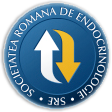
- Login
- Register
- Home/Current Issue
- About the journal
- Editorial board
- Online submission
- Instructions for authors
- Subscriptions
- Foundation Acta Endocrinologica
- Archive
- Contact
 Romanian Academy
Romanian Academy
 The Publishing House of the Romanian Academy
The Publishing House of the Romanian Academy

ACTA ENDOCRINOLOGICA (BUC)
The International Journal of Romanian Society of Endocrinology / Registered in 1938in Web of Science Master Journal List
Acta Endocrinologica(Bucharest) is live in PubMed Central
Journal Impact Factor - click here.

-
Book Review
Coculescu M
Molecular Pathology of Pituitary AdenomasActa Endo (Buc) 2012 8(1): 169-169 doi: 10.4183/aeb.2012.169
-
Endocrine Care
Branisteanu DD, Bottermann P, Zbranca E, Mogos V
Sunlight exposure and vitamin D supplementation at the institutionalized elderly - effects on calcium and bone metabolismActa Endo (Buc) 2007 3(2): 169-178 doi: 10.4183/aeb.2007.169
AbstractAims: we wanted to check the importance of sunlight exposure and vitamin D supplementation in reverting secondary hyperparathyroidism at IIIrd age institutionalized patients.\r\nDesign: cross-sectional study of calcium and bone metabolism in a group of 123 institutionalized IIIrd age volunteers after winter period, followed by a prospective double blind placebo-controlled study of effects upon calcium and bone metabolism, serum 25OHD3, 1,25(OH)2D3 and PTH levels of daily sunlight exposure during the summer months, with or without vitamin D supplementation (2000 IU 25OH-D3 po, daily). The study was performed on volunteers from the Elderly Resting House of Copou,\r\nIasi, Romania. 25OH-D3 was measured by an inhouse RIA technique. 1,25(OH)2D3 was measured by HPLC, serum calcium by photocolorimetry, bone alkaline phosphatase by immunoenzymatic technique, whereas serum PTH and urinary deoxypyridinoline (DPD) were measured by IRMA. Data was compared using Student’s t test and correlation analysis (R2). Almost all volunteers (93.5%) had low 25OH-D3 values, but normal or even increased levels of the active hormone, 1,25(OH)2D3. High PTH was found in 41 cases (33.3%), of which three were primary hyperparathyroidism, whereas the others had low or low-normal calcium levels (secondary hyperparathyroidism). More than half of the cases had high DPD levels, suggesting high bone turnover. Bone turnover parameters were higher in females than in males (p<0.05). A positive correlation between PTH and urinary DPD was noticed (R2=0.351). We further supplemented the vitamin D intake in 42 volunteers with a daily dose of 2000 IU of 25-OHD3 for three months in the summer period, whereas other 42 volunteers received placebo (vitamin B). Normalization of 25-OHD3 levels was seen in both vitamin D and placebo-treated sun-exposed groups. A more significant increase in 25OHD3, and also of 1,25(OH)2D3 at the upper limit of normal was however observed in the vitamin D-treated group. Normalization of serum PTH, but not of turnover parameters was observed in both groups. Mild hypercalcemia and increase in serum creatinine were noticed in the vitamin D-treated group.\r\nConclusions: Secondary hyperparathyroidism might be of importance in high turnover bone loss at institutionalized IIIrd age patients. Women seem to be more at risk, possibly due to sex hormone depletion. PTH-induced 1α hydroxylation in the elderly with undamaged kidney function partially compensates the paucity of vitamin D substrate, by normalizing active hormone levels. Mild sun exposure at institutionalized patients increases skin resources of vitamin D, normalizing 25OH-D3 levels and reverting secondary hyperparathyroidism. Oral vitamin D supplementation added to sunlight exposure should be done with caution, since it might be accompanied in certain patients by hypercalcemic or nephrotoxic effects at doses higher than 2000 IU/day. -
General Endocrinology
Yalcin MM, Ayvaz G, Gulbahar O, Toruner F, Ozkan C, Altinova AE, Akturk M, Arslan M
A Rare Cause of Discordant TSH: MACRO-TSHActa Endo (Buc) 2015 11(2): 170-173 doi: 10.4183/aeb.2015.170
AbstractWhen the laboratory results are not compatible with the clinical features of the patient, the presence of assay interference should be considered. Patient and Methods. Here, we report a case of macro-thyroid stimulating hormone (macro-TSH) in a 31 yearold woman who had hypothyroidism due to thyroidectomy as well as discordant TSH levels with the clinical findings. Her TSH level was spuriously high with low levels of free T3 and T4 on levothyroxine treatment and she had only mild fatigue. To screen for the presence of interference, we performed TSH measurements in different platforms and serial dilution of the sample. Her rheumatoid factor was found to be negative. Results. The testing for heterophile blocking and non-specific anti TSH antibodies suggested lack of interference. We did further test for the clinical suspicion of interference and TSH decreased to 29.8 μIU/mL from 210.5 μIU/mL (recovery: 14.1%) after polyethylene glycol (PEG) precipitation indicating the existence of macro-TSH. After two months of increased dosage of levothyroxine, her TSH level was still very high (192.0 μIU/mL), but free T3 and free T4 increased to normal levels. PEG precipitation test was reperformed and TSH was decreased to 46.0 μIU/mL from 192.0 μIU/mL (recovery: 24.0 %). Her levothyroxine replacement dosage was not increased since free T3 and T4 levels were normal. Conclusions. If there is a suspicion for the discordant TSH level, the presence of macro-TSH by PEG precipitation should be investigated even though first step investigations for interference were found to be negative. -
Endocrine Care
Badulescu CI, Piciu D, Apostu D, Badan M, Piciu A
Follicular Thyroid Carcinoma - Clinical and Diagnostic Findings in a 20-Year Follow Up StudyActa Endo (Buc) 2020 16(2): 170-177 doi: 10.4183/aeb.2020.170
AbstractContext. Follicular thyroid carcinomas (FTC) represent 6-10 % of all thyroid carcinomas; the evolution of FTC is quite controversial, partly due to frequent changes of the histopathological definition (minimally invasive–MIFTC or widely invasive carcinoma–WIFTC) and treatment strategies adjustments. Objective. This research aims to examine the diagnostic procedure, therapeutic attitude and survival rates of patients with FTC, over a period of 16 years in the same institution, with a follow-up of at least 4 years, by analyzing correlations between histology subtype, treatments and the rate of recurrent disease. Subjects and methods. We have studied 5891 patients with thyroid carcinomas who have undergone surgical or oncological treatment within the institution, between 1st January 2000 – 31st December 2015; among them we found 133 patients (2.25%) with “pure” follicular thyroid carcinoma: 114 (86%) women and 19 (14%) men, with a female-male ratio of 6:1. The age of the patients ranged from 10 to 76 years, with an average of 47.8 years. Statistical analysis was done comparing differences among groups of MIFTC and WIFTC. Results. There was an unexpected high percentage of WIFTC and also an increased number of biochemically persistent and/or recurrent disease in patients with MIFTC. A stronger correlation was observed with the tumour dimensions, rather than with the histopathological subtype. Conclusions. This research observed that overall survival was associated with tumour size rather than histopathological subtype and there is an important need to perform further studies to assess the effectiveness of treatment strategies. -
Endocrine Care
Erkan S, Avci T, Gundogdu R, Ozarslan F, Yabanoglu H, Yavuz Colak M, Albuz O
The Evaluation of Short and Long-Term Quality of Life in Patients Undergoing Thyroidectomy Due to Benign or Malignant DiseasesActa Endo (Buc) 2024 20(2): 170-178 doi: 10.4183/aeb.2024.170
AbstractContext. In patients undergoing thyroidectomy for malignant disease, lower quality of life scores were observed in the early postoperative period compared to those undergoing thyroidectomy for benign causes. Objective. Thyroid gland diseases are commonly encountered in society. This study presents health-related quality of life differences in thyroidectomies performed for benign and malignant diseases and the factors affecting this. Design. Patients who underwent thyroidectomy for thyroid disease between January 2021 and January 2022 were evaluated prospectively. Subjects and Methods. The SF 36 questionnaire was applied and interpreted at the 1st and 6th months after thyroidectomy in patients over the age of 18 who did not have a history of previous thyroid surgery. Results. The study included a total of 228 patients. Among them, 171 (75%) were female (male/female: 57/171). Multinodular goiter in benign cases and papillary carcinoma in malignant cases were predominant (68.3% and 90.6%, respectively). SF-36 scores were found to be worse in the malignant group. Conclusion. In patients undergoing thyroidectomy for malignant disease, lower quality of life scores were observed in the early postoperative period compared to those undergoing thyroidectomy for benign causes. -
General Endocrinology
Yildiz U, Bukan N., Aktas B., Toruner F
The Relationship Between Thyroid Function and Serum Levels of Angiopoietin-Like Protein 3, Leptin and VisfatinActa Endo (Buc) 2013 9(2): 171-180 doi: 10.4183/aeb.2013.171
AbstractBackground. Abnormal thyroid function is accepted to be associated with disordered production of hormones released by adipose tissue. Objective. We aimed to investigate the relationship between thyroid functions and adipocytokines as leptin and visfatin and Angiopoietin-like Protein 3 (ANGPTL), a secretory protein that affects adipocity in patients with thyroid dysfunction. Methods. Twenty-seven patients with hyperthyroidism, 27 patients with hypothyroidism and 31 euthyroid subjects as control group were selected. Serum TSH, fT3, fT4, fasting glucose, lipid profile, ANGPTL, visfatin, leptin, insulin levels were determined. Results. ANGPTL and visfatin were significiantly different in hypothyroid group when compared to other groups. (p<0.0167) ANGPTL was positively correlated with TSH and leptin. Leptin was correlated with insulin and ANGPTL positively. Visfatin, positively correlated with TSH, total cholesterol, LDL-C and negatively correlated with fT3 and fT4. Conclusion. Serum ANGPTL may be increased because of lipid abnormalities in hypothyroid patients. Visfatin is thought as a partly mediator to the effect of hyper/ hypothyroidism on several metabolic parameters. We suggest that the release of Visfatin is regulated by thyroid hormones. The effect of thyroid dysfunction on production and release of adipocytokine is not yet clarified. -
General Endocrinology
Maiti BR, Sarkar S, Sarkar R, Sengupta SC, Pradhan D, Chatterjee A
Inhibitions of thyroidal and extra-thyroidal T3, T4 and thyroperoxidase profiles with elevations of TSH following lithium treatment in adult and aged ratsActa Endo (Buc) 2010 6(2): 171-180 doi: 10.4183/aeb.2010.171
AbstractBackground. Lithium, a well known antimanic drug, has adverse effects on endocrine functions; but it is unknown in aged animals.\r\nAim. Untoward effects of lithium on thyroidal and extra-thyroidal thyroid hormones were investigated in adult and aged rats.\r\nMaterials and methods. Lithium was injected intraperitoneally at a dose of 2 mEq/kg\r\nbody weight daily to one group of rats for 10 days and the other for 25 days respectively. Thyroid and serum T3 and T4, and extrathyroidal liver and kidney T3and T4 levels were\r\nmeasured by ELISA. Pituitary and serum TSH-like substance was determined using a human-TSH immunoassay kit. Thyroperoxidase profile was measured spectrophotometrically.\r\nResults. Lithium decreased thyroid and serum T3 and T4 levels, and increased pituitary and serum TSH-like profiles after 10 and 25 days of treatments respectively in adult and aged rats. Thyroperoxidase activity was decreased in all the treatments of adult and aged rats. Liver\r\nand kidney T3 and T4 profiles were also decreased in lithium recipients. Lithium actions were severe after 10 days of treatment in adult rats and 25 days treatment in aged rats.\r\nConclusion. Lithium has untoward effects on thyroid and extra-thyroidal thyroid hormone synthesis irrespective of the age of rats. -
General Endocrinology
Culha C, Gorar S, Demir Y, Serter R, Aral Y
The Importance of Serum Adiponectin Concentrations during Pregnancy and Postpartum Period in Women with Gestational Diabetes MellitusActa Endo (Buc) 2011 7(2): 173-187 doi: 10.4183/aeb.2011.173
AbstractBackground. The prevalence of gestational diabetes mellitus (GDM) continues to increase worldwide and women with a\r\nhistory of GDM are at high risk for type 2 diabetes. The role of adiponectin in GDM has not been clearly defined.\r\nObjective. Our objective was to investigate the relationship between adiponectin levels in women with GDM, and insulin resistance and glucose and lipid metabolism.\r\nMethods. Twenty-four women with GDM were compared with 20 women with normal glucose tolerance (NGT). Serum adiponectin level, the homeostasis model assessment of insulin resistance (HOMAIR), and metabolic variables related to\r\nglucose and lipid metabolism were measured in the third trimester of pregnancy and 3 months after delivery.\r\nResults. Adiponectin level was significantly lower in pregnant women with GDM than in those with NGT during\r\npregnancy [6.5 (1-24) vs. 12.5 (5-18) μg/mL; p < 0.001] and at 3 months postpartum [7.0 (1-21) vs. 12.5 (4-19) μg/mL; p < 0.001]. HOMA-IR was higher in women with GDM during pregnancy (p = 0.001) and postpartum (p = 0.012). Insulin resistance, pre-pregnancy BMI (pr BMI), age, HDL-cholesterol during pregnancy, 2-h postprandial glucose level, insulin resistance, age and postpartum BMI during postpartum period were independently correlated with adiponectin level. Adiponectin level during pregnancy and postpartum was\r\nnegatively correlated with pr BMI.\r\nConclusion. Gestational diabetes is associated with hypoadiponectinemia during pregnancy and postpartum.\r\nHypoadiponectinemia during pregnancy may contribute to the pathogenesis of GDM. -
Endocrine Care
Gudovan E, Diaconescu C, Oros S, Neamtu C
Autoimmune thyroiditis associated with polycystic ovary syndrome: comments about 25 casesActa Endo (Buc) 2008 4(2): 173-180 doi: 10.4183/aeb.2008.173
AbstractThe aim of our prospective study is to determine the prevalence of autoimmune thyroiditis (AIT), sub clinical hypothyroidism and metabolic syndrome in patients with polycystic ovary syndrome (PCOS). Twenty-five patients with PCOS (according to Rotterdam ESHRE/ASRM criteria) aged between 20-35 years, hospitalised in the Institute of Endocrinology between January 2004 and December 2006 were selected to evaluate thyroid morphology, function and immunologic status, and were compared with a control group of 20 women without PCOS. All subjects were clinically examined (BMI, blood pressure, hirsutism) and evaluated for LH/FSH ratio, E2, P, PRL, free testosterone, TSH, TPOA, HOMA-IR, fasting glycaemia, lipid metabolism. Thyroid ultrasonography was performed with a multiple–frequency linear transducer in grey scale and colour Doppler mode. Ultrasound transvaginal examination of the ovary was also performed. Patients with PCOS had LH/FSH ratio > 2, free testosterone > 0.95 ? 0.2 mMol/L, 15 patients had TSH > 4.5 mUI/L (60 %. p < 0.001) and 7 (28 %) had high levels of TPOA. In the control group TSH and TPOA were normal. Thyroid ultrasound showed total thyroid volume of 16.54?1.80 cm3 in 60 % of patients with PCOS and 10.51 ? 1.20 cm3 in the control group. Hypoechogenic areas were present in 60 % of patients with PCOS and absent in the control group. 15 (60 %) of the patients with PCOS had insulin resistance (HOMA–IR > 3.3?1.2 mU x mMol/L), and 16 (16 %, p<0.001) had hyperlipoproteinemia. In the control group one case has hypercholesterolemia. In conclusion, this demonstrates that autoimmune thyroiditis is frequent in patients with PCOS and indicates a potential cardiovascular risk due to the association of sub clinical hypothyroidism, dislipidemia and insulin resistance and suggests that patients with PCOS should be screened for thyroid function and morphology. -
General Endocrinology
Chodari L, Smailnejad S, Fallahi M, Khalaji N, Ghorbanzadeh V
Oxidative Stress is Markedly Reduced by Combined Voluntary Exercise and Testosterone in the Heart of Diabetic RatsActa Endo (Buc) 2019 15(2): 173-181 doi: 10.4183/aeb.2019.173
AbstractObjective. Cardiovascular disorders in diabetes condition arise from increased oxidative stress. Both regular mild exercise and testosterone influence on body’s antioxidant system in diabetes. In this study, we evaluated treatment of testosterone and voluntary exercise, alone or together on oxidative stress in the heart and blood of diabetic rats. Methods. Type 1 diabetes was induced by intraperitoneal injection of 50 mg/kg of streptozotocin in rats. Sixty three rats have been divided into eight groups as follows: Diabetes, diabetes+ testosterone, diabetes+ exercise, diabetes+ testosterone+ exercise, diabetes+ castration, diabetes+ castration+ testosterone, Diabetes+ castration+ exercise, Diabetes+ castration+ exercise+ testosterone. Type 1 diabetes was induced by intraperitoneal injection of 50 mg/ kg of streptozotocin in the male Wistar rats and after a week, castration was performed. After 42 days of treatment with testosterone (2 mg/kg/day) or voluntary exercise alone or in combination, SOD, GPX and CAT activities and MDA levels were measured in the blood and heart tissue samples in the groups of study. In the end of study, SOD, GPX and CAT activities and MDA levels were measured in blood and heart tissue samples in the groups of study. Results. SOD, GPX and CAT activities significantly (p<0.05) increased in groups that treated either testosterone or exercise and MDA level significantly (p<0.01) decreased in the blood and heart tissue of diabetic and castrated diabetic rats. Simultaneously, treatment with testosterone and exercise had a synergistic effect on antioxidant enzymes level in diabetic and diabetic castrated rats. In the castrated animals with diabetes, SOD, GPX and CAT activities significantly decreased (p<0.05) and MDA levels significantly increased (p<0.05) in blood and heart tissue. Conclusion. Voluntary exercise and testosterone alone or together heightened body’s antioxidant system and were able to reduce the MDA levels in blood and heart of diabetic and castrated diabetic rats.